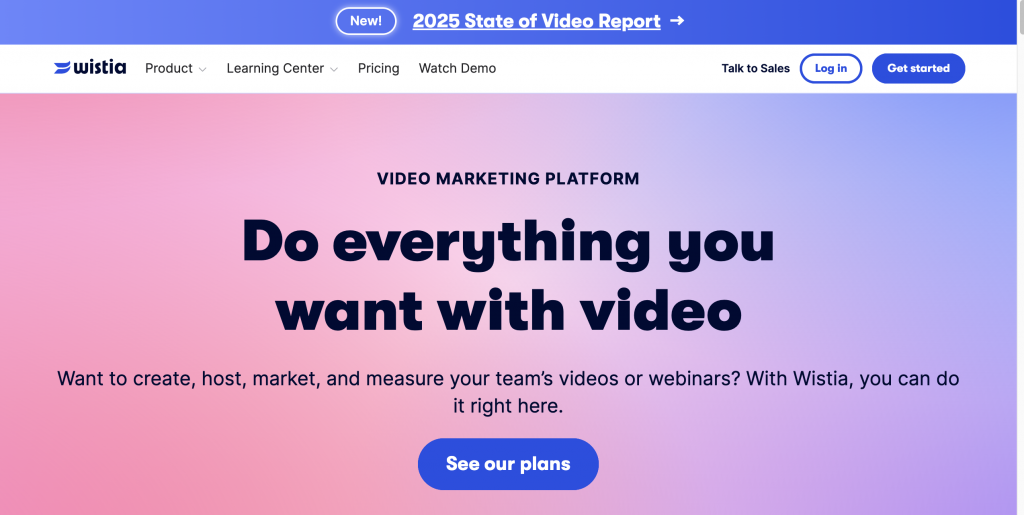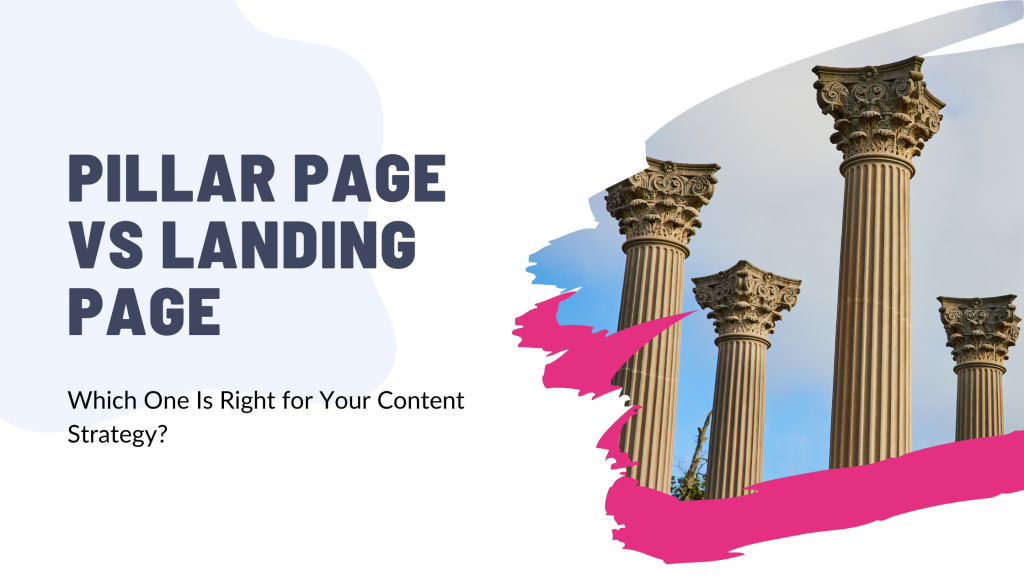Are you wondering how to make your website work harder for your business?
Choosing between a pillar page and a landing page might seem tricky, but getting it right can be a game-changer for your content strategy.
Whether you want to build authority, boost your SEO, or drive quick conversions, knowing which page fits your goals is key.
Stick with me, and I’ll help you unlock the secret to making your website truly shine!

If you need help creating your website, don’t hesitate to contact us. Click here.
What Is a Pillar Page?
When you hear the term pillar page, think of it as the strong foundation of your website’s content. A pillar page is a broad, central hub that covers a big topic in detail. Instead of just touching on a subject briefly, it dives deep, giving your visitors a full picture and guiding them to related smaller topics.

This organization isn’t just helpful for your readers — it also helps search engines understand your website better, making your content easier to find.
Key Features of Pillar Pages
A good pillar page offers comprehensive and detailed information about one main topic. It acts like a map, linking out to other pages (called cluster pages) that explore subtopics in more detail.
These pages are usually longer than regular blog posts and designed to stay relevant over time — what we call evergreen content. This means they keep bringing in visitors long after you’ve published them.
Benefits of Using Pillar Pages
Using pillar pages can seriously boost your website’s performance. They build authority by showing search engines that you’re an expert on important subjects related to your business.
For visitors, pillar pages make it easier to find everything they need in one place, keeping them engaged longer.
Research shows that websites with well-structured pillar pages tend to rank higher on Google, driving more organic traffic to your site.
By investing time in creating strong pillar pages, you’re setting your website up for long-term success — both in attracting visitors and turning them into loyal customers.
What Is a Landing Page?
A landing page is all about focus. Unlike a pillar page that covers a broad topic, a landing page is designed with one clear goal in mind — to get your visitors to take a specific action.

Whether it’s signing up for a newsletter, downloading an eBook, or making a purchase, landing pages are perfect for marketing campaigns, special offers, or lead generation efforts.
Key Features of Landing Pages
What makes landing pages so effective is their simplicity. They deliver clear and concise messaging that speaks directly to your visitor’s needs or interests.
You won’t find distractions like menus or extra links here — just a clean layout with a strong call-to-action (CTA) button that stands out.
These pages are often linked from ads, emails, or social media posts, making them highly targeted to the audience coming through those channels.
Benefits of Using Landing Pages
Landing pages are powerful tools to turn visitors into customers or leads. Because they focus on one goal, they help drive targeted traffic toward conversions like sales or sign-ups.
Another great advantage?
You can easily track and measure how well your campaigns are doing by monitoring landing page performance.
Plus, they’re quick to create and customize, so you can test different offers or messages to see what works best for your audience.
Pillar Page vs Landing Page: Key Differences
| Content Length and Depth | Goal and Audience Focus | SEO Impact |
|---|---|---|
| When it comes to content length and depth, pillar pages and landing pages couldn’t be more different. Pillar pages are designed to be long and detailed, offering a thorough, educational look at a broad topic. They provide valuable information that helps visitors understand the subject fully and encourages them to explore related content on your site. On the other hand, landing pages keep things short and sharp. Their content is focused solely on driving one specific action, so you won’t find lengthy explanations here — just clear, persuasive messaging that motivates visitors to act quickly. | The goals and audiences for these two page types also vary a lot. Pillar pages aim to inform and educate a wide audience, attracting visitors who want to learn more about your industry or services. They establish your website as a trusted resource by covering important topics in depth. In contrast, landing pages are built to convert — they target a specific group of visitors who are ready to take action, whether that’s making a purchase, signing up for an offer, or requesting a quote. The messaging on landing pages is laser-focused on convincing those visitors to complete the desired action. | From an SEO perspective, both pillar pages and landing pages play important but different roles. Pillar pages help improve your site’s overall structure by organizing content into clear topics and subtopics. This makes it easier for search engines like Google to understand your website, which can boost your organic search rankings over time. Landing pages, meanwhile, are often used to support paid marketing campaigns and drive conversions. While they may not have the broad SEO benefits of pillar pages, their focused design helps increase conversion rates from targeted traffic, making your advertising efforts more effective. |
How to Decide Which One Fits Your Content Strategy
Assess Your Business Goals
The first step in choosing between a pillar page and a landing page is to get clear on what you want to achieve. Are you aiming to build long-term authority in your industry by educating your audience and improving your website’s SEO?

Or is your priority to generate quick leads and drive immediate sales through targeted campaigns? Your business goals will guide the choice — pillar pages are great for establishing expertise, while landing pages excel at fast, focused conversions.
Understand Your Audience Needs
Next, think about your visitors. What do they really want when they land on your site? If they’re looking for detailed information to understand your products, services, or industry better, a pillar page will serve them well.
But if they need a simple prompt to take action, like signing up or making a purchase, a landing page is the way to go. Tailoring your content to meet these needs will keep visitors engaged and improve your results.
Consider Your Marketing Channels
Your marketing channels also play a big role in this decision. If you’re relying mostly on organic search traffic — people finding you through Google and other search engines — pillar pages are essential. They help boost your rankings and attract visitors interested in learning more.
However, if your strategy depends heavily on paid advertising, such as Google Ads or social media campaigns, landing pages become crucial because they’re designed to convert the targeted traffic from those ads.
Practical Tips for Implementation
- Start with pillar pages to lay a strong foundation for your website. These pages cover your core topics and help build authority over time.
- Use landing pages to support specific promotions, offers, or lead capture efforts. They’re perfect for short-term campaigns that need focused attention.
- Combine both for the best results. A balanced strategy uses pillar pages to attract and educate visitors, then guides them toward landing pages that encourage action and conversions.

If you need help creating your website, don’t hesitate to contact us. Click here.
Conclusion
Choosing between a pillar page and a landing page doesn’t have to be confusing. Remember, pillar pages help you build long-term authority and improve your website’s SEO by providing in-depth, valuable content. Landing pages, on the other hand, are designed to drive quick, focused actions that turn visitors into customers or leads. The best strategy often combines both, giving you the power to attract, educate, and convert effectively.
If you’re ready to take your content strategy to the next level but aren’t sure where to start, we’re here to help. Feel free to reach out through our contact form or connect with us on Instagram and Facebook. Let’s create a website that works hard for your business!

